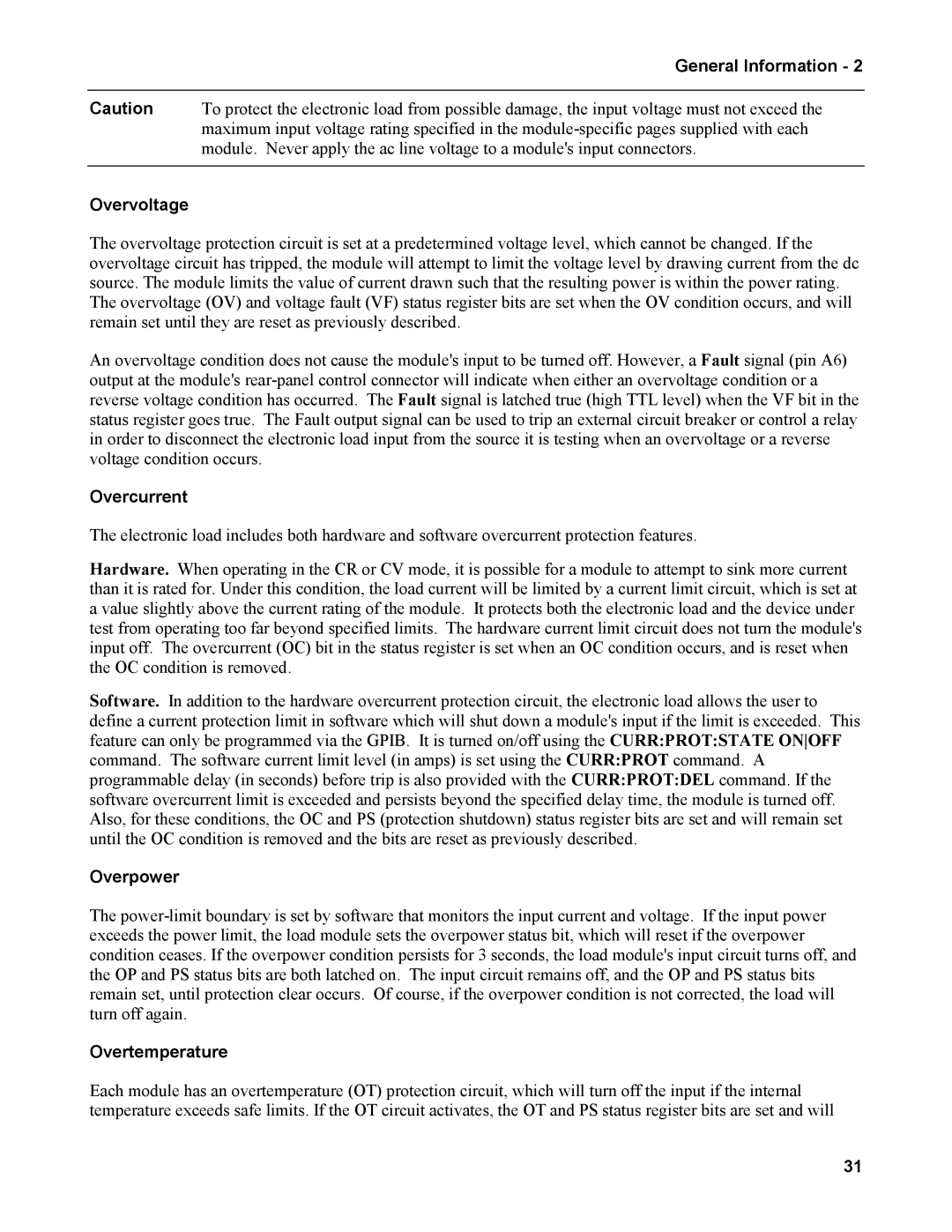
General Information - 2
Caution To protect the electronic load from possible damage, the input voltage must not exceed the maximum input voltage rating specified in the
Overvoltage
The overvoltage protection circuit is set at a predetermined voltage level, which cannot be changed. If the overvoltage circuit has tripped, the module will attempt to limit the voltage level by drawing current from the dc source. The module limits the value of current drawn such that the resulting power is within the power rating. The overvoltage (OV) and voltage fault (VF) status register bits are set when the OV condition occurs, and will remain set until they are reset as previously described.
An overvoltage condition does not cause the module's input to be turned off. However, a Fault signal (pin A6) output at the module's
Overcurrent
The electronic load includes both hardware and software overcurrent protection features.
Hardware. When operating in the CR or CV mode, it is possible for a module to attempt to sink more current than it is rated for. Under this condition, the load current will be limited by a current limit circuit, which is set at a value slightly above the current rating of the module. It protects both the electronic load and the device under test from operating too far beyond specified limits. The hardware current limit circuit does not turn the module's input off. The overcurrent (OC) bit in the status register is set when an OC condition occurs, and is reset when the OC condition is removed.
Software. In addition to the hardware overcurrent protection circuit, the electronic load allows the user to define a current protection limit in software which will shut down a module's input if the limit is exceeded. This feature can only be programmed via the GPIB. It is turned on/off using the CURR:PROT:STATE ONOFF command. The software current limit level (in amps) is set using the CURR:PROT command. A programmable delay (in seconds) before trip is also provided with the CURR:PROT:DEL command. If the software overcurrent limit is exceeded and persists beyond the specified delay time, the module is turned off. Also, for these conditions, the OC and PS (protection shutdown) status register bits are set and will remain set until the OC condition is removed and the bits are reset as previously described.
Overpower
The
Overtemperature
Each module has an overtemperature (OT) protection circuit, which will turn off the input if the internal temperature exceeds safe limits. If the OT circuit activates, the OT and PS status register bits are set and will
31
